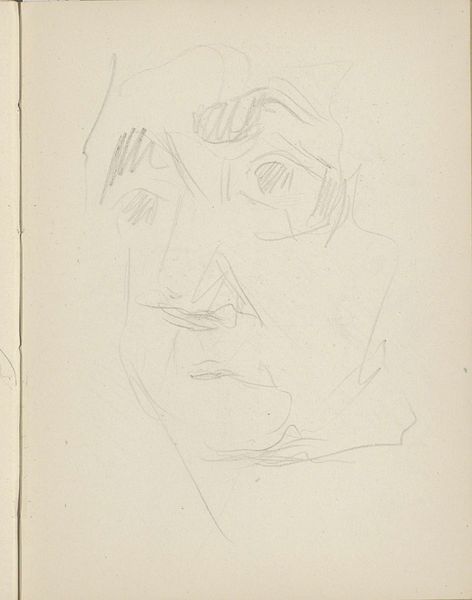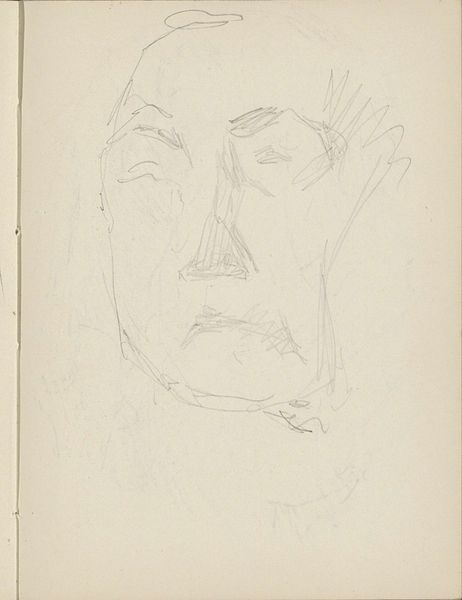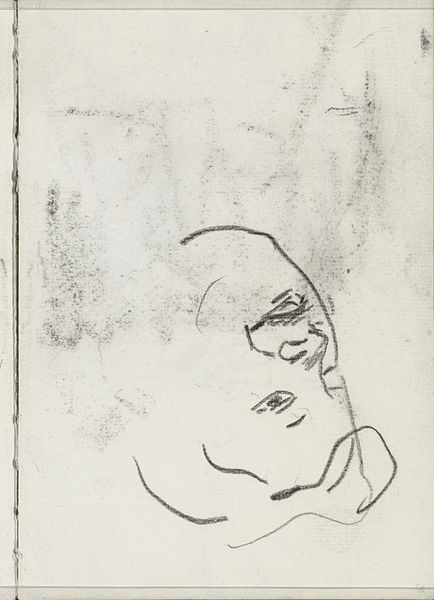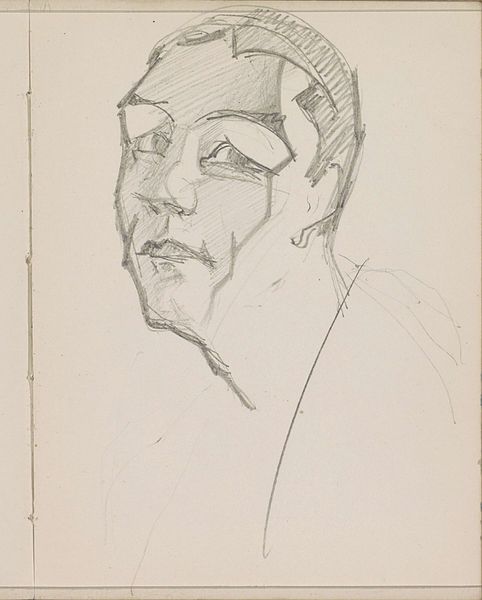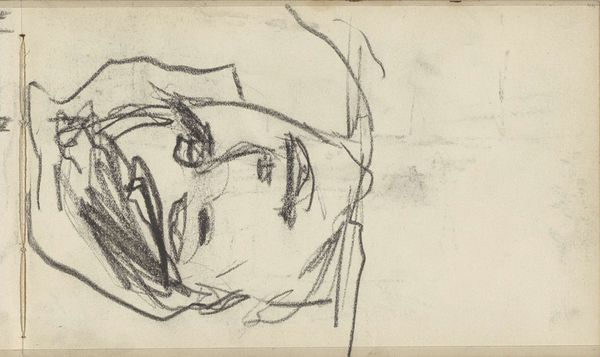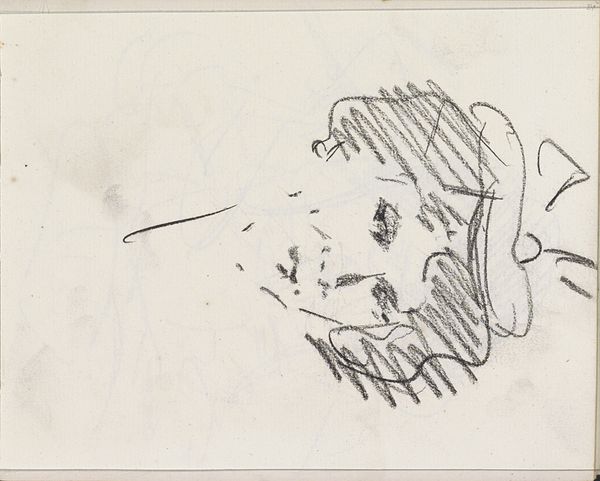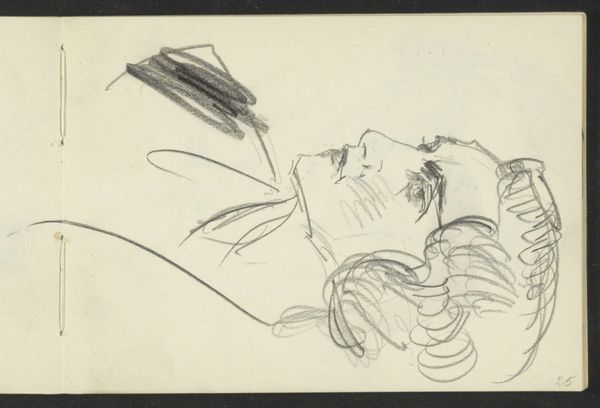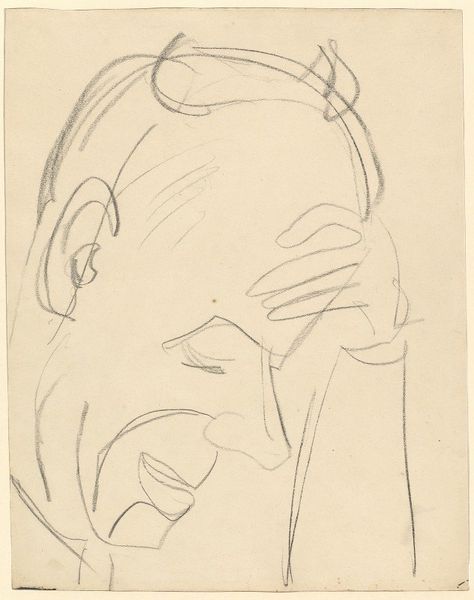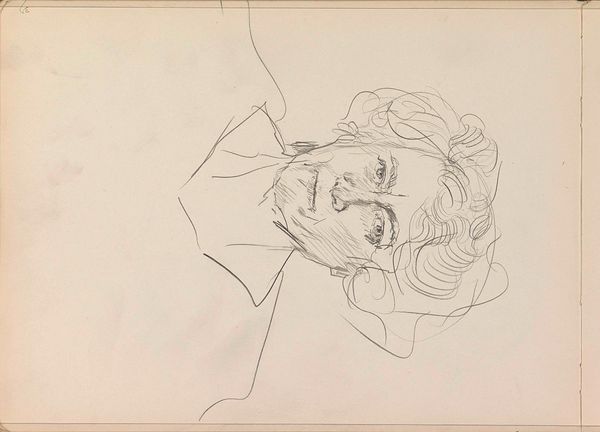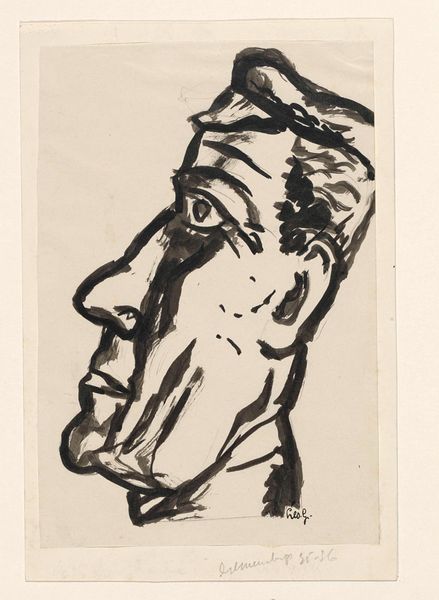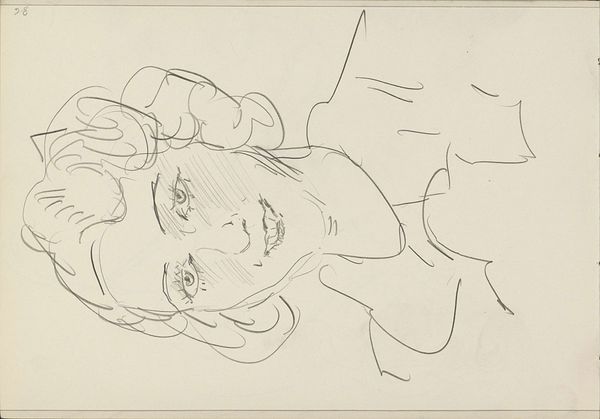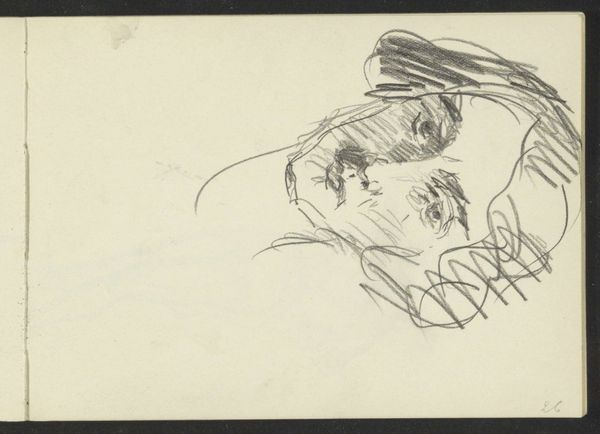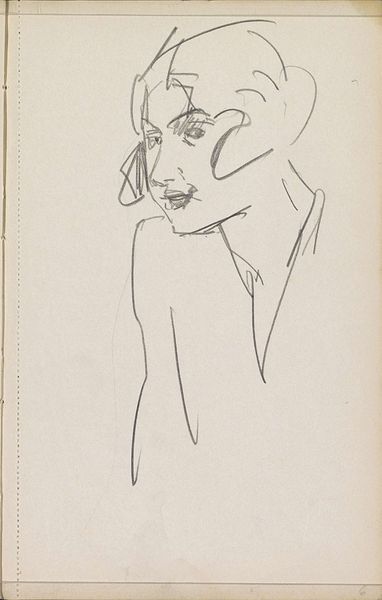
Copyright: Rijks Museum: Open Domain
Curator: Before us we have "Mannenhoofd," or "Head of a Man," a drawing rendered between 1886 and 1903 by Isaac Israels, part of the Rijksmuseum's collection. Editor: It feels incredibly intimate, almost as though we've stumbled upon a private thought captured in graphite. The looseness of the lines imparts a feeling of immediacy and raw emotion. Curator: Absolutely. Look at the economy of line, the sheer efficiency in conveying form and shadow. Israels utilizes hatching to build up tone, particularly around the eyes and cheekbones, giving depth to what would otherwise be a simple contour drawing. The quick, almost frantic lines showcase a real engagement with the subject. Editor: What intrigues me is how these seemingly hurried marks still manage to evoke such a strong sense of character. Is it possible to read into who this man was from these lines alone? Were portrait sketches such as this a kind of shorthand, representing certain social classes within Dutch society at the time? Curator: It is suggestive but likely impossible to verify who exactly Israels depicted, although considering his focus was on depicting everyday life, it is reasonable to suppose that it shows a person whom Israels observed during his routine walks or visits around the city. But look more at how light and shadow interact—the strategic placement of the darker tones allows the figure to emerge from the blank paper. See how the composition and the structural qualities lead our eyes. Editor: Perhaps in future analysis, some connections might be made within Dutch archival documents that could cast further insight into these possible depictions from everyday Dutch life, perhaps giving insight into this intriguing artist. What final reflections do you have on its qualities? Curator: The drawing offers such direct access to the artist's thinking process. It is like peeking over his shoulder, watching him work through form and expression in real-time. Editor: Yes, exactly that—it shows the immediacy and urgency of capturing life on paper through art and visual form. It is as though the subject is breathing on the very surface itself, an intriguing artifact to witness in this era of societal change.
Comments
No comments
Be the first to comment and join the conversation on the ultimate creative platform.
